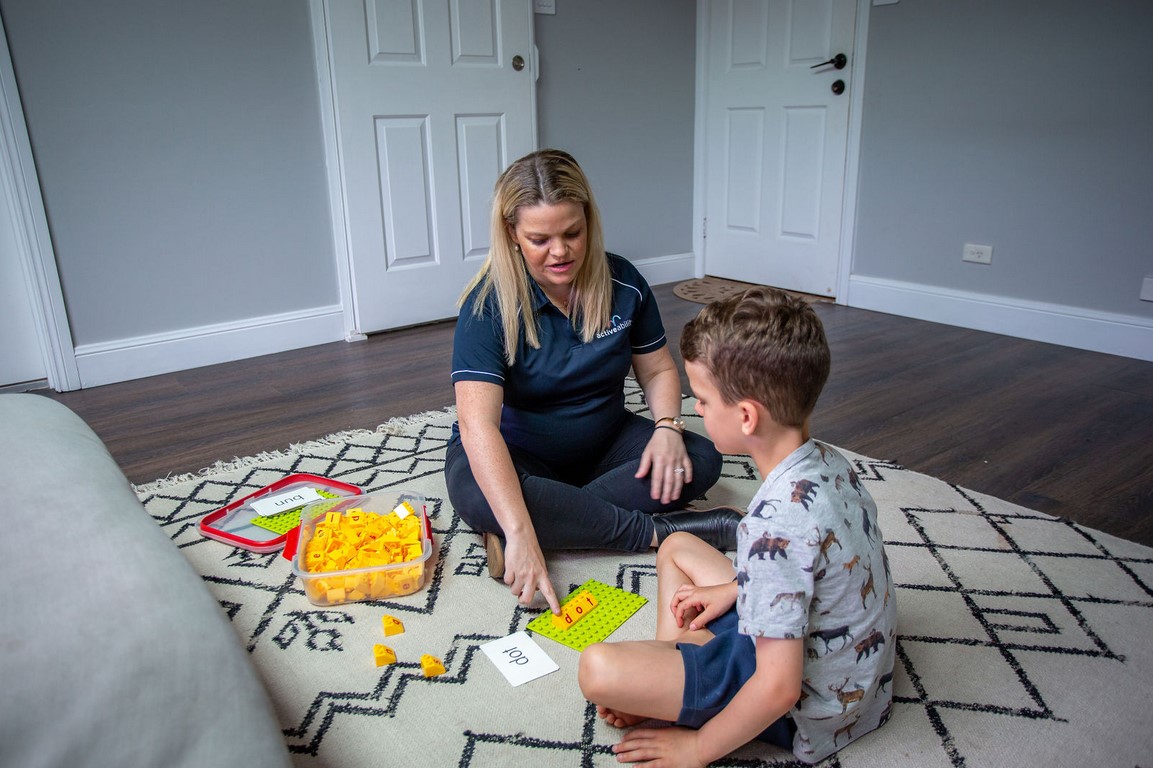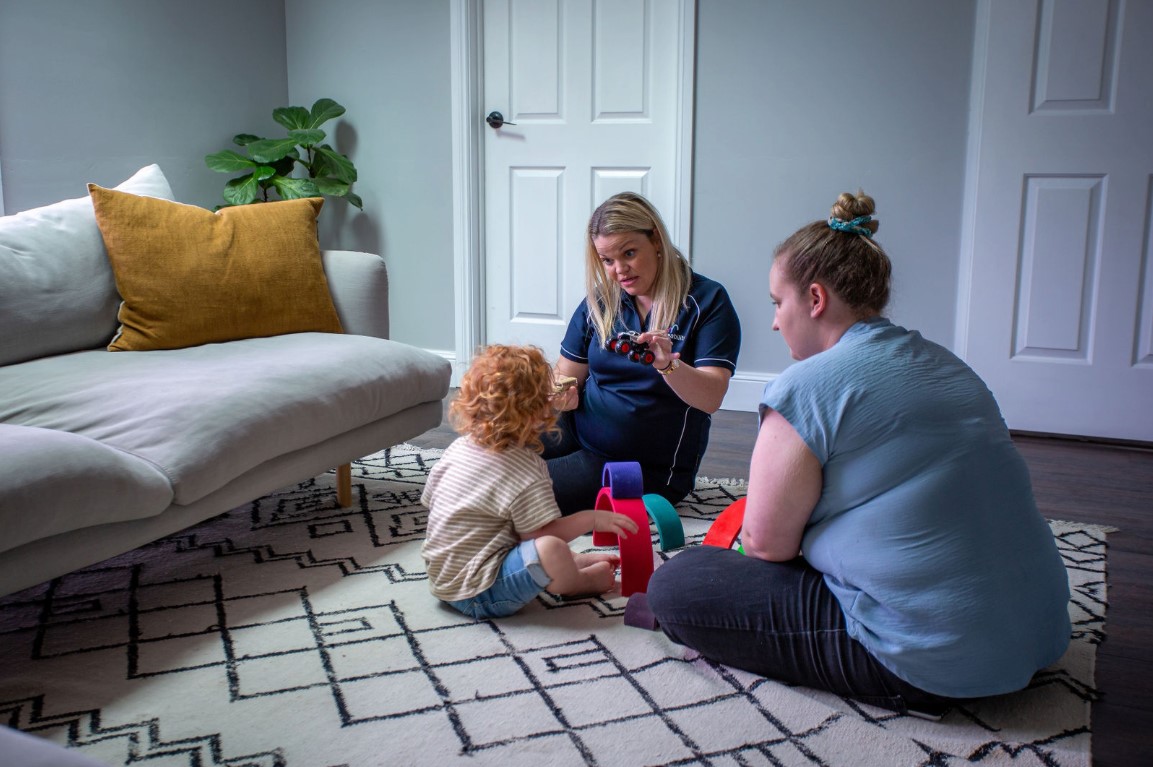Autism, Motor Development and the NDIS | Physio Advice
Autism spectrum disorder (ASD) is a neurodevelopmental disorder that affects around one in 100 individuals in Australia. For a person to be diagnosed with autism spectrum disorder (ASD), they must have characteristics including social and communication difficulties and repetitive behaviours.
Recent research has shown that up to 87% of children with ASD aged 5-15 years are at risk of movement difficulties. The same study found children with more severe concernss in other areas, such as communication and social skills, were also at higher risk for movement problems.
These difficulties can affect a child’s gross and fine motor skills, including running, jumping, throwing, holding a pencil or using scissors. When these movement problems go unaddressed, they can significantly impact a child’s overall development.
Parents and caregivers can look for the signs indicating a child is experiencing motor difficulties and it is then essential to seek out support from a qualified healthcare professional. A physiotherapist or exercise physiologist can help to assess a child’s motor development and create a personalised treatment plan to support their overall development. This may include exercises to improve strength, balance, and coordination and strategies to improve motor skills.
When to See a Physiotherapist About Motor Development in Autism
If you are a parent or caregiver of a child with ASD, you should be aware of the signs that indicate the need for physiotherapy intervention. Physiotherapy can help children with ASD overcome motor disorders, improve motor control, and support overall development.
If your child is showing signs that they need support, they may benefit from early intervention programs.
These programs can help identify your child’s motor difficulties and provide strategies to address them. Suppose your child’s symptoms are minor, but you still have concerns about their motor development, seeking an assessment from a qualified healthcare professional is still essential.
If you are seeking expert assessment, advice and management for improved motor development, referral to an NDIS-registered physiotherapist may be indicated for the following reasons:
- Screening and evaluation of developmental delays
- Assessment and treatment for gross and fine motor skill development
- Management of muscle tone (low muscle tone and spasticity)
- Advice and management of posture and coordination
- Mobility assessment and training
- Movement pattern retraining
- Balance assessment and training
- Injury assessment and rehabilitation
- Pain management
Autism Spectrum Disorder and Motor Development
Motor difficulties are common in individuals with Autism Spectrum Disorder. These issues can affect a child’s ability to perform everyday tasks and participate in sports and other physical activities, impacting their overall development.
Children with ASD may experience difficulties with muscle tone, fine and gross motor skill development, coordination, posture, and balance. These issues can impact a child’s ability to perform activities of daily living, such as tying their shoelaces, doing up buttons, or holding a pencil at school. They may also experience challenges with body awareness and spatial perception.
Participation in physical activity is essential for children’s physical and mental wellbeing. Adequate physical activity is vital for bone health, physical fitness, cardiometabolic health, cognitive function, healthy weight maintenance, and mental health [iv]. However, research has shown that children and youth with ASD are at risk of having low levels of physical activity and more sedentary behaviours.
Lack of physical activity can lead to a negative cycle. Its effects – such as reduced sleep duration, weight gain, social isolation, poorer cognitive outcomes, and poorer fitness and cardiometabolic health – lead to further inactivity and increased sedentary behaviour [iii]. As a result, children with ASD can continue to fall behind their peers.
It is essential to focus on improving motor skills and physical activity levels in children with ASD. This can be done through interventions that target gross motor skills, such as running, jumping, and throwing, and fine motor skills, such as handwriting and using utensils. A physiotherapist can provide support and guidance on strategies to help improve these skills.
Physical activity can also help improve mental health outcomes in children with ASD. Physical activity has improved mood, reduced stress and anxiety, and increased self-esteem. It can also provide an opportunity for children with ASD to socialize and make connections with their peers.
Early Identification and Assessment
Early identification and assessment of developmental motor disorders are essential for children with ASD. Research has suggested that early childhood motor developmental delays can be an early indicator of ASD, arising before other signs develop [v]. As such, physiotherapists are critical in identifying and assessing developmental motor disorders in children with ASD.
Physiotherapists are highly trained in identifying disruptions to normal development. They have the skills to screen for motor disorders and observe a child’s overall development over time. Physiotherapists who specifically work with children can identify any early motor difficulties and refer the child for further screening and diagnosis if they feel it is warranted.
Identifying early motor delays is crucial as it fosters access to appropriate early intervention programs. Early intervention can help to improve short and long-term outcomes for children with ASD. If a child is diagnosed with ASD, an early intervention program can help them develop the skills they need to participate in everyday activities and social participation and reach their full potential.
The DSM-5
The ASD diagnosis is typically based on the Diagnostic and Statistical Manual of Mental Disorders (DSM) criteria. Physiotherapists can play a critical role in supporting this diagnostic process by identifying and documenting any motor developmental disorders that may be signs of ASD.
Early identification of motor developmental disorders can also help identify co-occurring conditions, such as intellectual impairment or attention-deficit hyperactivity disorder (ADHD). This information can help plan the child’s comprehensive and individualised support plan.
Gross and Fine Motor Skills Management
Once a motor development issue has been identified, a physiotherapist will be involved in management. The NDIS plan manager may organise a planning meeting to discuss the child’s developmental delay and specify the goals of the therapy program. The physiotherapist will then develop a tailored intervention plan that addresses the child’s specific needs. NDIS physiotherapists use tailored exercise programs and sometimes other therapies (such as massage, stretching, electrotherapy and hydrotherapy) to support:
- Gross Motor Skills – such as sitting, crawling, standing, walking, and kicking
- Fine Motor Skills – such as holding scissors, doing up buttons, and handwriting
- Posture and Alignment – for sitting and standing, including wheelchair seating
- Coordination – including hand/eye coordination and complex tasks such as ball skills
- Managing Muscle Tone Issues – including high and low muscle tone
- Strength Development – such as upper and lower body strength for participating in play-based activities and sports
- Improved Balance – for participation in games, sports, and group activities
The physiotherapy program is always based on an individual’s needs and goals and involves engaging and age-appropriate functional tasks. Therapy is often play-based to ensure strong engagement, essential for the best outcomes. Physiotherapists may also use technology-based interventions, such as movement activities using tablets and computer games, to support the child’s motor planning.
Studies have shown that physiotherapy interventions are effective in improving motor skills. For example, a systematic review of 20 movement interventions found that they were practical for improving gross motor skills [vi]. In addition to providing therapy, physiotherapists also train support people, such as parents and caregivers, to perform specific types of play, therapeutic exercises or stretches at home, which can aid in self-management of the disorder.
Promoting Physical Fitness and Sports Participation
Physical activity and sports participation can be challenging for children with autism spectrum disorders due to sensorimotor and communication difficulties and motor skill issues that make it hard for them to keep up with their peers. However, physiotherapists are qualified to provide physical activity and movement interventions that support participation in physical activity programs and equip children and adolescents with ASD with the skills and confidence to re-join group-based programs with their peers.
Research has shown that physical activity interventions can improve muscle strength/endurance, skill-related fitness, locomotor and manipulative skills, and social functioning in participants with ASD aged 2-22 years [vii]. This reinforces physical activity’s status as an evidence-based strategy for youth with ASD.
For example, a 2020 study published in the Journal of Autism and Developmental Disorders [viii] looked at the impact of a community-based, organised football program on children aged 5-12 with ASD. The study found that the children who completed the football program demonstrated a significant reduction in parent-reported anxiety and increased organised physical activity separate from the program compared to the children in the comparison group.
In addition to the physical benefits of physical activity interventions, sports participation can positively affect social communication and interaction. This is because sports provide a structured environment for social interaction and teamwork, which can help children with ASD develop social skills. Physiotherapists who specialise in working with children with ASD can help provide behaviour support to ensure that children can benefit from these social interactions safely and positively.
Accessing Physio Through the NDIS for Autism Support
The National Disability Insurance Scheme (NDIS) is an Australian government-funded initiative that supports people with disabilities, including those diagnosed with ASD. One of the supports that can be accessed through the NDIS is physiotherapy.
According to figures from the NDIS, 29 per cent of participants with an approved plan had a primary disability of ASD – meaning it is the NDIS’s largest primary disability category [ix]. If you are seeking physiotherapy services for your child through the NDIS, you will need to make an access request to become a scheme participant. You can do this by calling 1800 800 110 or completing and submitting a form via email.
To become a NDIS participant, the child must be diagnosed with a disability significantly affecting their ability to perform everyday activities, such as motor skills. The diagnosis must meet the diagnostic criteria set out in the DSM-5. Once a child is diagnosed, they can participate in a NDIS planning meeting to discuss their needs and goals with the National Disability Insurance Agency (NDIA).
During the planning meeting, the child and their family can discuss their goals for physiotherapy and other support services. The NDIA will then develop an individualised plan that addresses the child’s specific needs and goals. This plan will outline the funding that has been allocated for physiotherapy and other services.
Once the plan has been developed, the child and their family can then access autism physiotherapists who are registered with the NDIS. The physiotherapists will work with the child and their family to develop a tailored intervention plan that addresses the child’s specific motor skill issues. The method may include regular sessions with the physiotherapist, exercises and stretches to be done at home, and training to support people to perform specific types of play and therapeutic activities at home.
In addition to providing physiotherapy, autism physiotherapists can provide behaviour support to ensure that the child can benefit from the therapy safely and positively. The NDIA can also provide funded supports for equipment, such as wheelchairs, to help the child participate in physical activities.
Find out more at https://www.ndis.gov.au/applying-access-ndis/how-apply.
Effective Therapy for Motor Development at Active Ability
When comparing potential strategies for supporting motor development in a child with ASD, it’s essential to look for therapies that are backed by research. As tertiary-qualified and registered allied health professionals, physios use therapies backed by sound evidence.
A physio working with individuals with disability will be up to date with current research and can advise you about the best, evidence-based strategies for supporting someone with autism to achieve their movement potential and participate at home, school and in their community.
Like more information before arranging a service agreement with Active Ability?
Contact us or call us on (02) 8678 7874 (Monday to Friday) and one of our friendly team members will gladly answer your questions.
If you’re keen to get started with a NDIS-registered physiotherapist to help with motor skill development and are ready
for a service agreement, please fill out us NDIS referral form.
REFERENCES:
[i] Bhat, A. N. (2020). Motor Impairment Increases in Children with Autism Spectrum Disorder as a Function of Social Communication, Cognitive and Functional Impairment, Repetitive Behavior Severity, and Comorbid Diagnoses: A SPARK Study Report. Autism Research, 13(3), 507-516. doi: 10.1002/aur.2453
[ii] Licari, M. K., Alvares, G. A., Varcin, K., Evans, K. L., Cleary, D., Reid, S. L., … Whitehouse, A. J. O. (2020). Prevalence of Motor Difficulties in Autism Spectrum Disorder: Analysis of a Population-Based Cohort. Autism Research, 13(2), 298-306. doi: 10.1002/aur.2230
[iii] Cynthia, C., Duck, M., McQuillan, R., Brazill, L., Malik, S., Hartman, L., … Jachyra*, P. (2019). Exploring the Role of Physiotherapists in the Care of Children with Autism Spectrum Disorder. Physical & Occupational Therapy in Pediatrics, 39(6), 614-628. doi: 10.1080/01942638.2019.1585405
[iv] World Health Organization. (2021). Physical activity. Retrieved from https://www.who.int/news-room/fact-sheets/detail/physical-activity
[v] Harris, S. R. (2017). Early motor delays as diagnostic clues in autism spectrum disorder. European Journal of Pediatrics, 176(9), 1259-1262. doi: 10.1007/s00431-017-2951-7
[vi] Case, L., & Yun, J. (2019). The effect of different intervention approaches on gross motor outcomes of children with autism spectrum disorder: a meta-analysis. Adapted Physical Activity Quarterly, 36(4), 501-526. doi: 10.1123/apaq.2018-0174
[vii] Healy, S., Nacario, A., Braithwaite, R. E., & Hopper, C. (2018). The effect of physical activity interventions on youth with autism spectrum disorder: A meta-analysis. Autism Research, 11(6), 818-833. doi: 10.1002/aur.1955
[viii] Howells, K., Sivaratnam, C., Lindor, E., Heussler, H. S., Lee, K. J., & Hazell, P. (2020). Can Participation in a Community Organised Football Program Improve Social Behaviour Functioning and Communication in Children with Austism Spectrum Disorder? A Pilot Study. Journal of Autism and Developmental Disorders, 50(10), 3714-3727. doi: 10.1007/s10803-020-04647-3
[ix] National Disability Insurance Scheme. (n.d.). Outcomes for Participants with Autism Spectrum Disorder. Retrieved from https://data.ndis.gov.au/reports-and-analyses/participant-groups/outcomes-participants-autism-spectrum-disorder
[x] Reedman, S., & Truscott, L. (2021). Five facts about… physiotherapy and autism spectrum disorder. Australian Physiotherapy Association InMotion Magazine, June, 45-47. Retrieved from https://australian.physio/inmotion/five-facts-about%E2%80%A6-physiotherapy-and-aut
Get in touch
hidden
Follow Us




